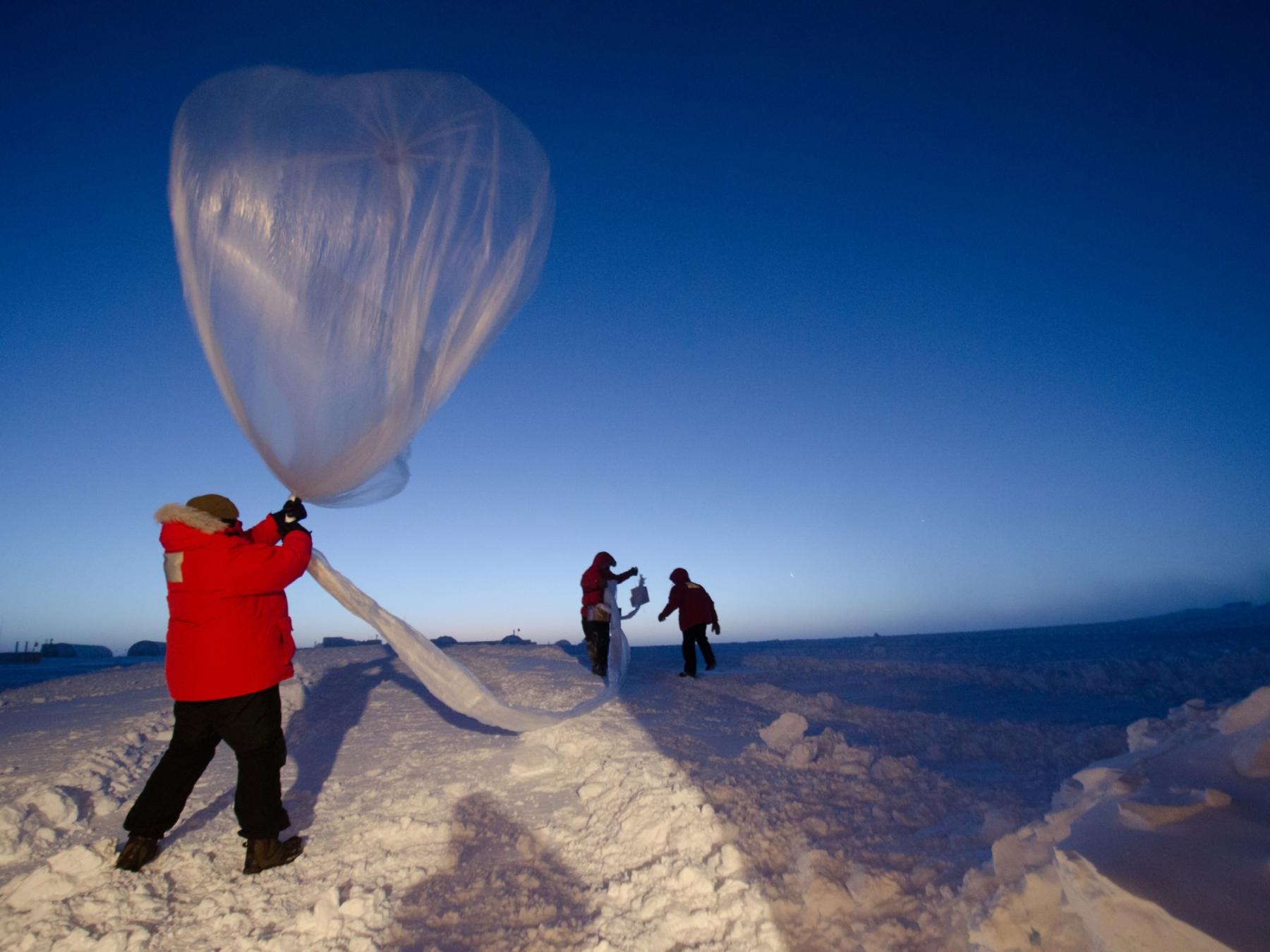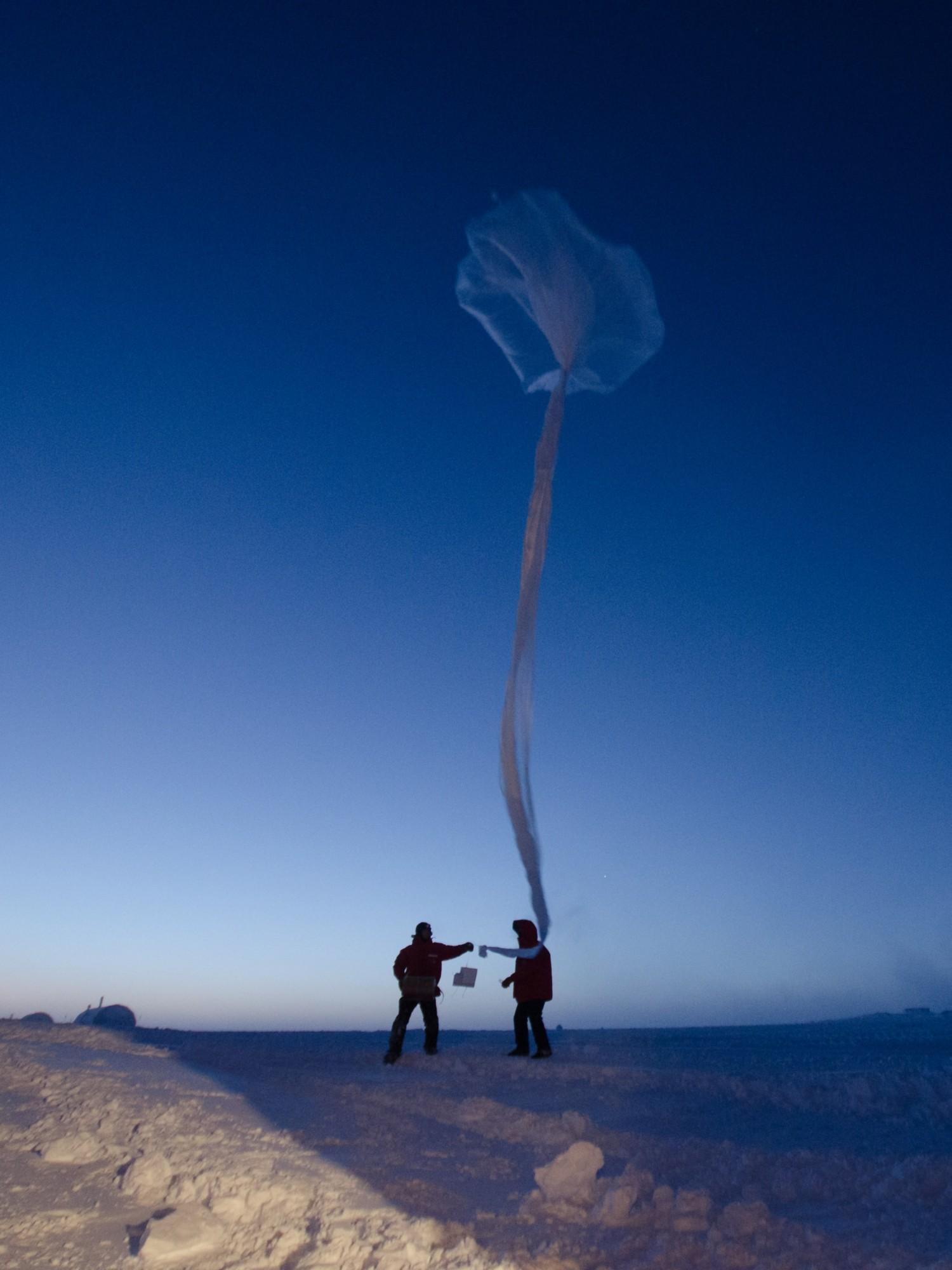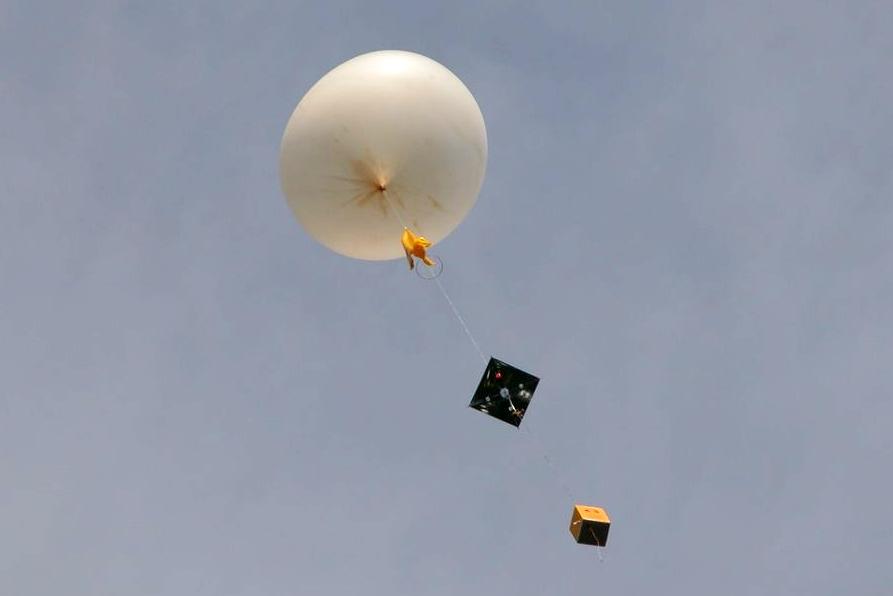
What are weather balloons and how do they work
All sorts of UFOs you may have seen in the sky in fact are weather balloons — one of the main tools for gathering atmospheric data for weather forecasting purposes. In this article, you will learn more about what weather balloons are and how they work.
Weather balloons definition and purposes
Weather balloons are one of the five major weather instruments used to collect various data about the state of the atmosphere, oceans, soil, and other environments, along with weather stations, radars, satellites, and buoys.
Like other instruments, balloons collect information on all major weather elements: temperature, wind, air pressure, humidity, visibility, and more.
Balloons were created at the end of the 19th century. One of the first to actively use them to collect data on the weather was Léon Teisserenc de Bort, the French meteorologist and a pioneer in the field of atmospheric science. Particularly thanks to him it was possible to identify such layers of the atmosphere as tropopause and stratosphere.
The main purpose of collecting data from the balloons, like all other instruments, is to predict the weather. However, there is one important nuance: it is about the weather at altitude. So this is their main difference from weather stations making measurements at 10 meters level.
Vertical measurements of atmospheric information are called "sounding". Hence weather balloons are also called "sounding balloons".
Although measuring weather at altitude may seem unnecessary to the people on the ground, for meteorology they are incredibly important for understanding of weather variability and for predicting various severe and extreme weather events: storms, tropical cyclones, lightning, and others.
At the same time, the balloons themselves are essentially the simplest tool for such measurements. They are so popular that despite having stations, radars, and satellites, they are still launched twice or four times a day every day of the year from about 1,000 locations around the world at one time. About 100 of these are in the United States, of which more than 75,000 balloons are launched each year.

NOAA / Unsplash
The main types of weather balloons
Weather balloons are divided into two large groups: general and special. Then they are divided into several more types based on various parameters:
Altitude
General weather balloons are the first and most common type of balloons to collect various weather information at an average height of 18–20 km. Once they reach this height, they collapse, as I will explain in more detail below.
High-altitude weather balloons are the second most popular type, the purpose of which, as the name implies, is to collect data at high altitudes up to 30–40 km, and sometimes even more.
Lifespan
Transosondes are weather balloons that are specifically designed to stay at high altitudes for as long as possible to collect more data, transmit more images, and so on.
Purpose (weather elements)
Other balloons are used to collect only one specific type of weather.
For example, ceiling balloons or pilot balloons, or pibals are used to determine the cloud ceiling or a height of the lowest visible clouds, one of the main parameters for measuring clouds on par with cloud base, cloud cover and others. Thanks to their red color, they can be observed until they disappear behind the clouds and thus their height can be calculated.
Or, thanks to the fact that balloons can be equipped with GPS, they collect data about the wind, by tracking its speed and direction.
Some balloons also measure ozone concentrations.
Depending on the purpose, there are also different kinds of other specialized balloons, such as those for aviation, pollution monitoring, photography or videography, various scientific research, and others.
(By the way the balloons are not only for collecting data, but also for distributing them. For example, Google had such a project as Loon, which closed in 2011 due to low profitability.)
With or without a crew
Balloons can also be crewed as in the case of Felix Baumgartner, who in 2012 went to an altitude of 38,969 m in a capsule attached to a high-altitude balloon to jump back down to Earth. He did it! In 2014, Alan Eustace, broke Felix’s world record jumping similarly from 135,890 feet (41.42 km).

NOAA / Unsplash
Design and working features of weather balloons
Weather balloons differ from other instruments in that they are one of the simplest instruments, consisting of only a few parts. Therefore, it is also one of the most inexpensive. A typical weather balloon is usually consists of four-five main parts:
The actual balloon, up to 6 feet in size, is made of latex or synthetic rubber (neoprene) filled with either hydrogen or helium. At launch, the balloon walls are 0.051 mm thick, and at maximum altitude, due to lower air pressure (the closer to the ground, the higher it is), they are only 0.051 mm thick, while the balloon expands to 20 feet. Therefore, each balloon inevitably collapses.
Radiosonde is a device consisting of many sensors, which collect data about the weather. The device is designed to operate at high altitudes and can withstand as low as −139°F (-95°C). A transmitter on the radiosonde sends a signal over the radio with the collected data in near real-time every couple of seconds. Before the radio was invented, such instruments had to specifically return to the ground to receive the collected data.
In turn, radiosondes can also be of different types, depending on their purpose. For example, ozonesonde measures the concentration of ozone at various altitudes.
Other instruments are also mounted on weather balloons for photography and video recording, etc. Sometimes instead of one "box of tools" under the balloon, a whole series of 5 or more pieces develops.
A cable connects the first and second elements: ballon and instrument(s).
A parachute is an element sometimes located between the balloon and the radiosonde or other instruments that allow the latter to return safely to the ground after the balloon collapses. It usually has an envelope with an address and instructions for delivery. People return such devices each year, allowing them to be reused and saving money for weather services not spoiled by the governments when it comes to budgets. According to NOAA, of the 75,000 probes produced in the U.S., about 20% are salvaged by the people.

Wikipedia
Working features
The maximum altitude that the balloon can climb without harming its structure is also called “near space” due to its location between the Armstrong limit (18–19 km / 11–12 mi) and the Karman line (85 km / 53 mi). The balloon flight record is 53.7 km. For this reason, they are often mistaken for UFOs by people not realizing that they are “only” instruments for collecting data about the weather.
But even this height is not the limit. There are also so-called balloon satellites that do not fill with gas immediately, but after they are put into orbit. They are used in particular for atmospheric density observations and so-called “space weather”: solar pressure calculations, estimating the effect of solar wind on orbit, and others. The first such balloon, or rather also satellite, Echo 1, was launched into a 1,600 km (990 mi) high orbit in 1960.
The reverse is also true: there is a less-expensive balloon "taxi service" to take commercial satellites to space instead of a higher-cost rocket.
Records are set not only by altitude but also by the length of time the balloons remain in the atmosphere, which allows one to collect data about the Earth for a longer time and over a larger area. For example, the World View Enterprises balloon lasted 16 days and the company’s goal is 60 days. The project of the latter also includes a five-day flight for a group of people, which already belongs to the field of space tourism.
The rate of ascent of the balloon is controlled by the amount of gas it is filled with.
The balloons travel at speeds of up to 200 miles per hour and cover distances of up to 125 miles or more.
Individual high weather balloons, on the other hand, are designed to stay at the same altitude usually in the mid-stratosphere (60,000 to 70,000 feet / 18 to 21 km) in the same place for as long as possible. Because of their special design and characteristics, they successfully “occupy” their place in the atmosphere and do not move anywhere, collecting weather data in one area. They act as atmosphere analogs to satellites. So these are so-called "geostationary balloon satellites".
Limitations of weather balloons
As has already become clear, the main disadvantage of general weather balloons as compared to other weather instruments is their limited altitude (although still incredibly high) and their inevitable atmospheric collapse. If a station or radar operates for years, a balloon exists for a day. A weather balloon can also be easily damaged in extreme weather conditions. Hence, launching them at the time of storms does not give 100 guarantees of their normal functioning from the beginning.
Text: Ivan Kuznetsov
Cover photo: Rachael Le Goubin / The Arizona RE via Eu.azcentral.com
You will also find useful
Latest News
Professional Weather App
Get a detailed online 10 day weather forecast, live worldwide wind map and local weather reports from the most accurate weather models.
Compare spot conditions, ask locals in the app chat, discover meteo lessons, and share your experience in our Windy.app Community.
Be sure with Windy.app.



